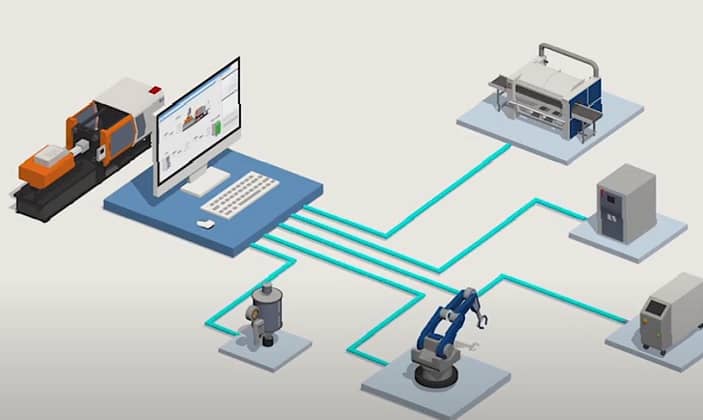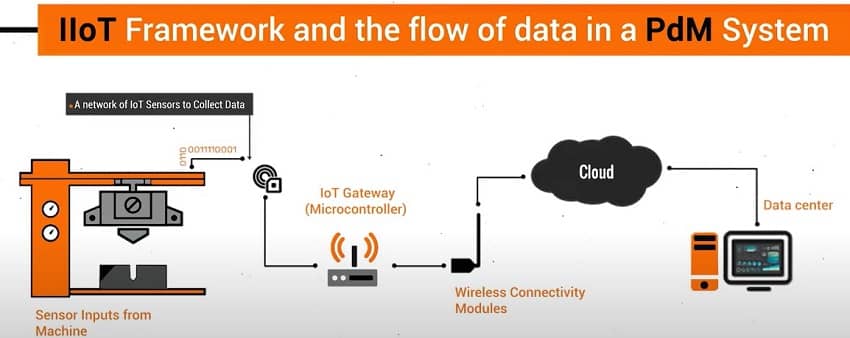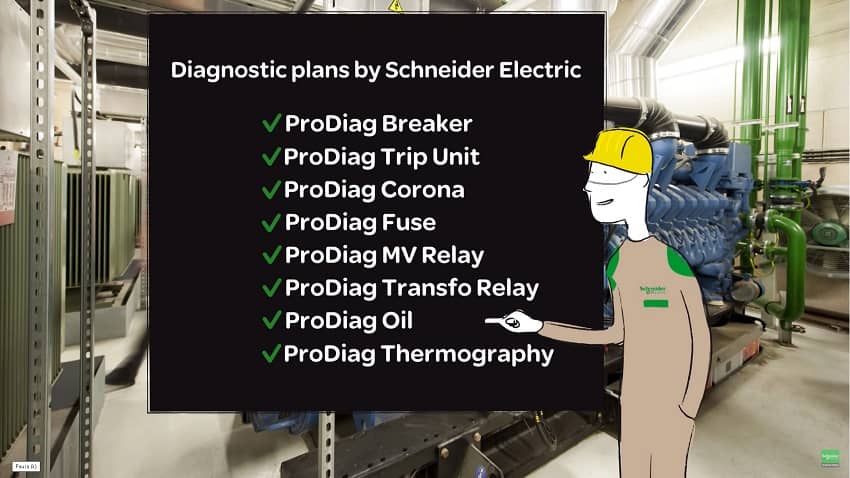Preventive Maintenance Examples and Types - FULL GUIDE!

Predictive maintenance uses tools based on data collected by sensors such as thermal imaging and ultrasonic acoustic microphones. The data is processed and analyzed by computer software. As a result, predictive maintenance is an excellent way to avoid unplanned downtime. The following are three tools that are useful in the process of predicting maintenance and preventing breakdowns.
What is predictive maintenance?
Essentially, predictive maintenance works to identify when machines are about to break down so you can plan maintenance accordingly.
Predictive maintenance systems use sensor data to analyze the current condition and establish baselines for normal and abnormal operations. When an anomaly is detected, the predictive maintenance protocol is activated and work orders are generated and assigned to technicians.
While predictive maintenance requires a large upfront investment, the benefits far outweigh this expense. According to a Deloitte report, it can result in a 10x ROI, a 50% reduction in maintenance costs and a significant reduction in downtime.
"In addition to providing advanced warnings of when a machine is about to fail, predictive maintenance is also effective in predicting when equipment will need to be repaired."
Machine learning algorithms can detect anomalies and identify which parts of a machine need repair or replacement. This technology requires significant investment in model development, governance and machine learning. But predictive maintenance will make your industrial equipment more efficient and more productive. In a few years, your company's industrial equipment will be running at optimal performance and you will never have to worry about missing a critical maintenance event again.
Preventive maintenance examples and types
1. IoT sensors for predictive maintenance

These sensors can reduce maintenance costs and maintenance time. They can also reduce maintenance emergencies and increase productivity. These sensors are becoming less expensive, making them an affordable option for a wide range of companies.
2. Sensors for vibration, sonic and ultrasonic analysis
In the field of predictive maintenance, sensors for sonic and vibration measurements are a vital element. They can detect the impact of unexpected vibrations on machines.
Vibration-related failures can cause downtime, which is the last thing you want. Sensors for vibration and sonic measurements can feed this information back to connected systems.
Ultrasonic analysis, also known as vibration and sonic analysis, uses high-frequency sound waves to detect mechanical problems. These sound waves are converted into digital data by a computer program and compared with previous recordings to identify changes in machine condition.
In some industries, portable UA sensors are used for immediate data collection and analysis. They can be used for leak detection, electrical inspection, mechanical inspection, steam trap maintenance and even arc flash detection.
see How to start your predictive vibration maintenance video:

3. Thermographic maintenance sensors to prevent equipment damage
Thermal imaging sensors capture two-dimensional images of equipment to predict problems. They are especially useful for rotating equipment, where overheating is an early sign of impending failure.
In addition, thermal imaging provides more detailed data on the condition of equipment than conventional inspection methods. For these reasons, thermal imaging sensors have gained popularity among maintenance managers and are now used in a variety of industries.
These devices can be mounted on machines in different locations and can operate on AC or DC power. They are portable and have batteries to power them.
They are designed to monitor various types of machinery and can be installed in hard-to-reach areas. They can be attached to surfaces or fixed with adhesives.
In addition, the sensors can be installed on multiple machines and components. Thermal imaging sensors can capture images of multiple components and equipment at the same time.
4. Oil and lubricant sensors for predictive maintenance
In-line oil and lubricant sensors provide real-time insight into the behavior and lubrication conditions of a mechanical component. They help prevent maintenance costs by detecting oil deterioration in the early stages.
Using an oil and lube sensor is a proven way to ensure the continued efficiency of your equipment.
The DropsA USA oil quality sensor is certified to international standards and is used in both industrial and commercial environments. It measures oil capacitance and conductivity, which combine to form a permittivity reading. Permittivity readings are 60 times more sensitive than traditional dielectric sensors, and can be used to provide rapid maintenance planning.
The benefits of using oil and lubricant sensors for predictive maintenance are numerous. The first benefit is that using this type of sensor can help detect a problem in advance. It also provides information about the condition of the lubricating fluid, allowing maintenance personnel to take preventative action before it is too late.
The second benefit of using oil and lube sensors for predictive maintenance is that they can help reduce downtime and maximize equipment life.
5. Predictive maintenance of industrial equipment driven by I.A.
The use of Artificial Intelligence is becoming more and more widespread in manufacturing facilities. As the industrial internet of things grows, so does the volume of data collected. With machine learning, data becomes more structured and more accurate. This helps predictive maintenance identify potential problems even before they become big ones.
In addition, machine learning algorithms can determine how long an asset will last before it fails completely. They can also analyze the root cause of failures. In this way, they can prevent them before they disrupt production.
Watch video of Predictive maintenance of industrial equipment powered by AI artificial intelligence conference:

6. Programming softwares

The use of scheduling tools for predictive maintenance provides accurate real-time information on the condition of assets. They continuously monitor the condition of assets and generate data for the maintenance team to use. This avoids scheduled downtime and unplanned downtime, both of which are costly and preventable.
In addition, these softwares can determine if a part will last a long time and need replacement. In addition, it can help the maintenance team identify what needs replacement and how to replace it.
In addition to identifying critical assets, these scheduling tools also track history. This helps them decide how often to perform preventive maintenance.
PREVENTIVE MAINTENANCE ADVANTAJES AND DISADVANTAGES
Advantages of preventive maintenance
- Industrial predictive maintenance tools help companies improve equipment uptime and reduce costs by predicting and preventing problems before they occur.
- They help reduce the amount of time and money spent on repairs and replacements.
- In addition, this approach also helps determine what types of maintenance and priorities.
- Another benefit of predictive maintenance is that it helps reduce the risk of employee injuries and accidents. This avoids the need to shut down operations and disrupt supply chains.
- Less downtime of your industrial circuit helps you increase production rates, which leads to higher profits.

Disadvantages of preventive maintenance
- The biggest disadvantage of predictive maintenance is the initial investment in the technology.
- It requires trained personnel to run the system and is expensive to implement.
- The system is an investment and requires careful monitoring and interpretation.
- But the advantages outweigh these disadvantages!
How predictive maintenance works?
To get started with a predictive maintenance (PM) program in the industry you lead, you will need to collect a great deal of data about your assets. The most important thing to collect is information about similar equipment and other factors that can affect the condition of your assets.
This approach requires that you first understand your assets and their operating condition. Then, you can develop mathematical models, feed them with real-time data, and derive information from them. These models must be customized for each machine and can only be developed by teams of engineers working on the machine.This information will help you determine which assets require the most attention.
You can also create a maintenance log that includes which assets require the most maintenance and what types of activities were performed.
You can start by integrating the preventive tools identified for your industry that are most critical and then extend the use of these tools to other machines.
Watch video of How does a predictive maintenance (PdM) solution work?:

Conclusion
Industrial predictive maintenance is a key factor in the optimization of production processes. This method is based on predictive analysis, which is a process of predicting possible failures through automatic learning.
With the advancement of technology, predictive maintenance software and techniques have become more sophisticated. Already, several of these tools use artificial intelligence and machine learning algorithms to analyze large amounts of data and determine the most likely causes of problems.
They can even identify the most likely locations to repair a component. The technology is now available to a wider range of organizations and is becoming more cost-effective than ever.
We encourage you to implement preventive maintenance in your company!
